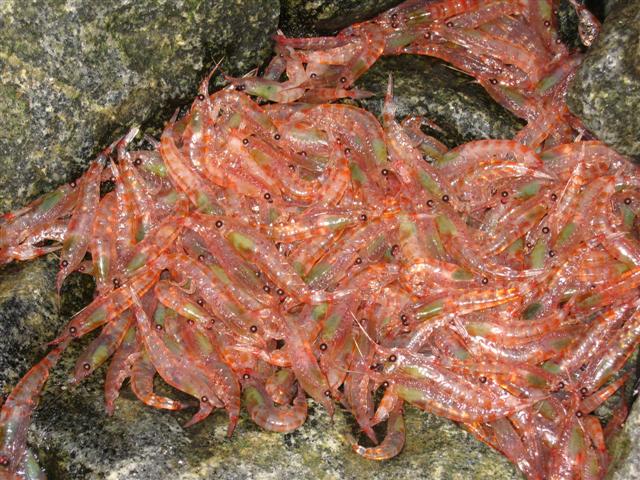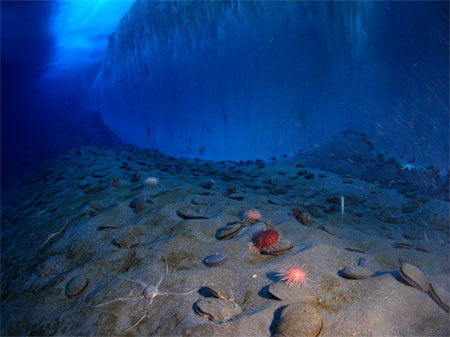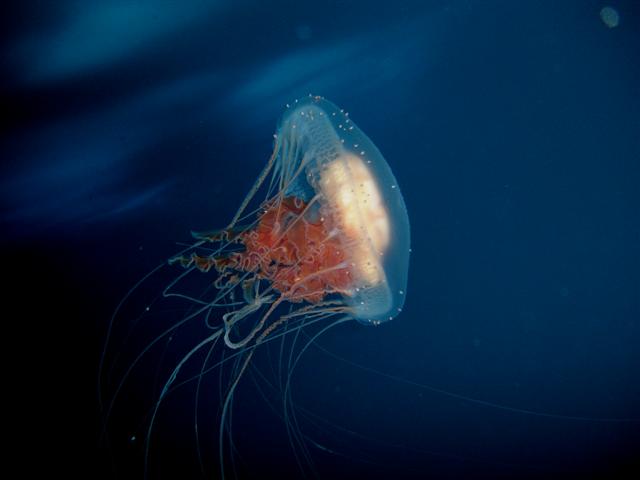Roll callMarine census inventories species diversity in key ecosystems including AntarcticPosted September 3, 2010
What lives in the ocean? That’s the central question of an international project to inventory species diversity and distribution in key marine ecosystems around the world. Scientists involved in the Census of Marine Life The data from the census includes information from 25 regions around the world including the Antarctic. The results were reported through a series of articles in the open access journal PLoS ONE, which is published by the Public Library of Science. [See related press release The waters around Australia and Japan were the most diverse, each region featuring nearly 33,000 forms of life. The seas off China, the Mediterranean Sea and the Gulf of Mexico rounded out the top five most diverse areas for known species. Antarctica ranked 15th with 8,200 identified plant and animal species. Crustaceans (including crabs, lobsters, crayfish, shrimp, krill and barnacles) accounted for about 35 percent of the Antarctic species, by far the largest group. On the other hand, fish comprised only 4 percent of the Antarctic species. Endemic species comprise about half of New Zealand and Antarctic marine species and a quarter of those in Australian and South African waters. The proportion of species not yet described is estimated at 39 to 58 percent in Antarctica. The data for the census come from the combined efforts of the Census of Antarctic Marine Life (CAML) CAML is one of 17 projects under the Census of Marine Life. The National Science Foundation “Most species in the Southern Ocean are rare, with over half of the known benthic [seafloor-dwelling] species having only been found once or twice,” wrote Huw J. Griffiths “This inventory was urgently needed for two reasons,” said Mark Costello 
Photo Credit: Kyle Hoppe/Antarctic Photo Library
Krill, a type of crustacean, which account for about 35 percent of Antarctic species.
Griffiths’ paper said that the huge area covered by the Antarctic and the previous lack of good baseline knowledge have made it difficult to assess the true human impact on the region. “Our knowledge of the biodiversity of the Southern Ocean is largely determined by the relative inaccessibility of the region,” he wrote. “Benthic sampling is largely restricted to the shelf; little is known about the fauna of the deep sea. The location of scientific bases heavily influences the distribution pattern of sample and observation data, and the logistical supply routes are the focus of much of the at-sea and pelagic work.” At least four species of cetacean (such as whales) and 18 species of birds found in the Southern Ocean are currently classified as threatened or endangered on the International Union for the Conservation of Nature Red List “There have been no recorded extinctions in the Antarctic since research began, but considering that many species are known from a single specimen or scientific cruise, our ability to comment is greatly restricted,” Griffiths wrote. The main threats to marine life worldwide have been overfishing, lost habitat, invasive species and pollution, according to the PLoS One studies. Emerging threats include rising water temperature and acidification of sea water. “Overexploitation of living resources [in Antarctica], such as krill, fish, and their associated bycatch, is a major threat to the pelagic ecosystem,” Griffiths wrote. “Benthic trawling in the South Georgia region was banned because of overfishing in the 1980s, but longline fishing still continues. “Although commercial fishing in Antarctica is heavily legislated, one of the biggest problems faced by fishery managers … is illegal, unlicensed vessels,” the paper also reported. There are currently no records of successfully established invasive marine animal species within the Southern Ocean, according to the paper. However, at least one recent science expedition along the Antarctic Peninsula reported seeing a massive influx of king crabs at relatively shallow depths along the continental shelf. [See related article: Changing course.] A separate research cruise funded by the NSF’s Office of Polar Programs The effort to count polar species ramped up during the International Polar Year (IPY) Almost all the species in the key regional areas like Antarctica are included in a list of 185,000 marine species created by the World Register of Marine Species (WoRMS)
|



For USAP Participants |
For The Public |
For Researchers and EducatorsContact UsU.S. National Science FoundationOffice of Polar Programs Geosciences Directorate 2415 Eisenhower Avenue, Suite W7100 Alexandria, VA 22314 Sign up for the NSF Office of Polar Programs newsletter and events. Feedback Form |



